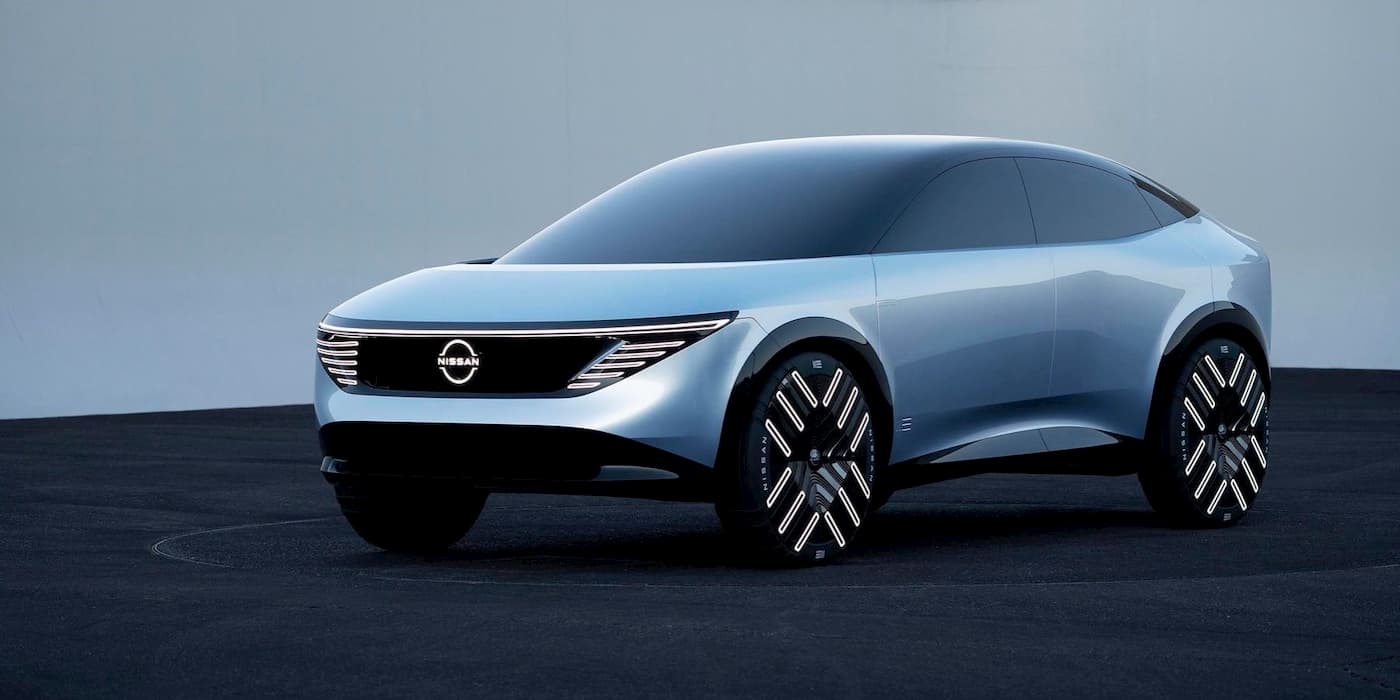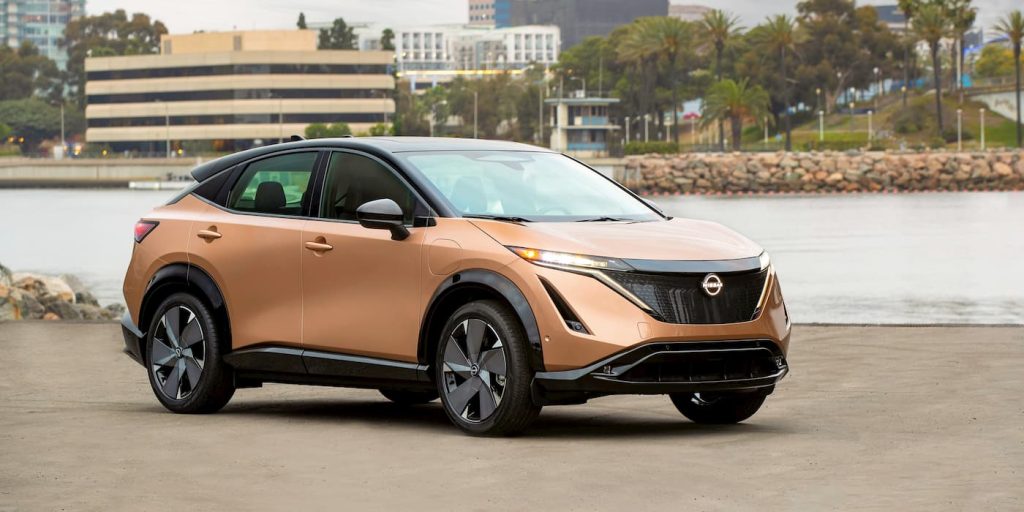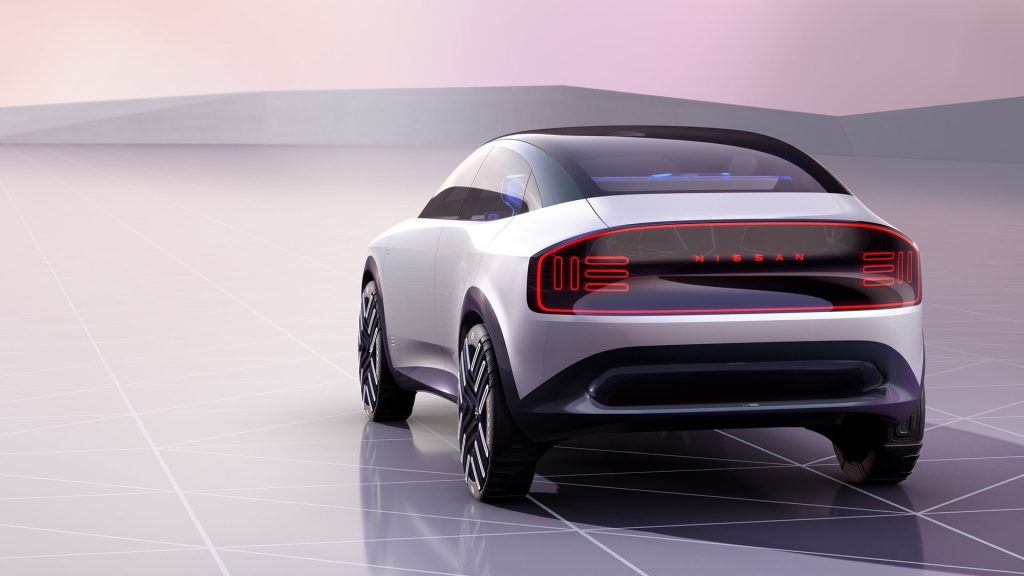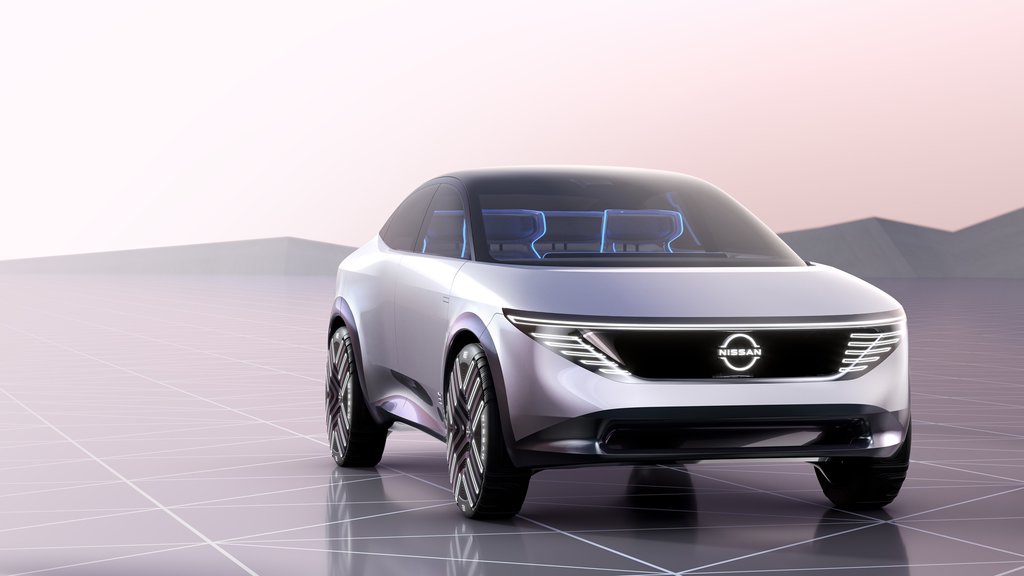
Nissan is saying goodbye to the little EV that started it all. Although Nissan is phasing out the LEAF electric car, the automaker plans to begin producing its successor in 2026.
Beyond the LEAF, Nissan plans for EV successor
The Nissan LEAF was, at one time, a top-selling electric vehicle. After releasing the electric compact car in 2010, the LEAF quickly became a favorite as the first mass-market EV (18 months before the Tesla Model S) in the US, with a comfortable interior and decent range at an attractive price.
However, nearly every automaker, from startups to legacy, has released its own electric cars with more advanced features, enhanced designs, and longer ranges over the past decade.
The LEAF has lost ground, with sales falling consistently for several years. According to a report from Automotive News last year, Nissan will not be rolling out a next-generation LEAF model.

Instead, Nissan is planning for a more modern EV to replace the LEAF, designed for today’s buyers. Although Nissan released its second mass-market EV, the Ariya, it was never planned as a replacement.
Nissan may replace the LEAF with a coupe-like crossover similar to the “Chill-Out” concept the automaker revealed in 2021, with its “sleek and modern” design. The production version would likely look less futuristic.



Meanwhile, executives were split on carrying the LEAF name over. As AutoPacific president Ed Kim explains, “Today, the LEAF means little to EV shoppers.”
According to a new report from Autocar, Nissan said in its submission to the UK government committee on battery manufacturing that “the LEAF successor will enter production in 2026.” Nissan’s Sunderland factory in the UK will begin production on Nissan’s LEAF successor in 2026 as it prepares for the majority of its output to be EVs by 2028.
Nissan is said to be leveraging supply from its upcoming nearby battery factory in collaboration with Envision AESC.
By 2024, the plant will have 11 GWh of capacity, which can expand to 30 GWh, according to Nissan’s submission. Envision said the “Gen 5” battery cells being supplied would enhance energy density by 30% over the current LEAF model.
The LEAF successor will reportedly be based on its CMF-EV platform from the Renault-Nissan-Mitsubishi alliance, the same used for the Nissan Ariya.
Electrek’s Take
From the sounds of it, Nissan is going bigger with the LEAF successor. With the popularity of larger models, like electric crossovers and SUVs, automakers are racing to introduce larger-sized EVs despite the need for efficiency.
GM is also phasing out its smallest and most affordable EV, the Bolt EV and EUV. Although GM and Nissan are phasing the models out for different reasons (GM is moving to an all-Ultium-based lineup), it will leave the market with a glaring lack of cheap, small EVs.
Given the need for smaller, more efficient models, it will be a little disappointing if Nissan extends the size of the LEAF’s replacement.

Your perspective on this topic is very interesting. Thanks for the detailed explanation.
generic lasuna – diarex price purchase himcolin for sale
where can i buy besivance – buy besifloxacin eye drops purchase sildamax pills
order neurontin 800mg online – buy azulfidine online sulfasalazine 500 mg over the counter
buy probalan online – probenecid 500 mg cost purchase carbamazepine sale
buy celecoxib 100mg without prescription – flavoxate without prescription buy generic indocin over the counter
order colospa 135mg generic – cost etoricoxib 60mg pletal 100 mg pills
diclofenac 100mg us – voltaren 50mg over the counter aspirin 75 mg us
purchase rumalaya generic – cheap rumalaya pills where to buy elavil without a prescription
mestinon 60 mg canada – buy imuran 50mg generic buy azathioprine paypal
brand voveran – order isosorbide sale order nimotop
baclofen 25mg without prescription – purchase lioresal sale feldene 20mg uk
purchase meloxicam generic – meloxicam 15mg generic toradol pills
buy periactin online – periactin 4 mg drug purchase tizanidine generic
omnicef 300 mg tablet – cleocin online order brand cleocin
order prednisone for sale – buy permethrin paypal where to buy elimite without a prescription
buy permethrin without prescription – benzac usa retin cost
purchase betnovate sale – order differin sale benoquin uk
flagyl 400mg uk – buy flagyl without prescription purchase cenforce for sale
buy augmentin 625mg online cheap – augmentin pills levothroid order online
buy generic cleocin – buy clindamycin generic buy cheap indocin
buy cozaar sale – buy losartan online cheap order cephalexin 125mg pill
buy crotamiton without a prescription – brand crotamiton buy aczone medication
buy provigil – order generic melatonin 3mg melatonin for sale
buy bupropion 150mg online – cheap shuddha guggulu online buy shuddha guggulu tablets
capecitabine canada – buy generic xeloda for sale buy danocrine without a prescription
order prometrium 200mg – order clomiphene for sale cheap clomiphene
purchase alendronate online – fosamax online order provera us
cabergoline 0.25mg generic – premarin 0.625mg oral cheap generic alesse
гѓ—гѓ¬гѓ‰гѓ‹гѓі её‚иІ© гЃЉгЃ™гЃ™г‚Ѓ – г‚ёг‚№гѓгѓћгѓѓг‚Ї еЂ‹дєєијёе…Ґ гЃЉгЃ™гЃ™г‚Ѓ г‚ўг‚ёг‚№гѓгѓћг‚¤г‚·гѓі гЃЇйЂљиІ©гЃ§гЃ®иіј
г‚·гѓ«гѓ‡гѓЉгѓ•г‚Јгѓ« гЃЉгЃ™гЃ™г‚Ѓ – г‚·гѓ«гѓ‡гѓЉгѓ•г‚Јгѓ«йЂљиІ© г‚·г‚ўгѓЄг‚№ жµ·е¤–йЂљиІ©